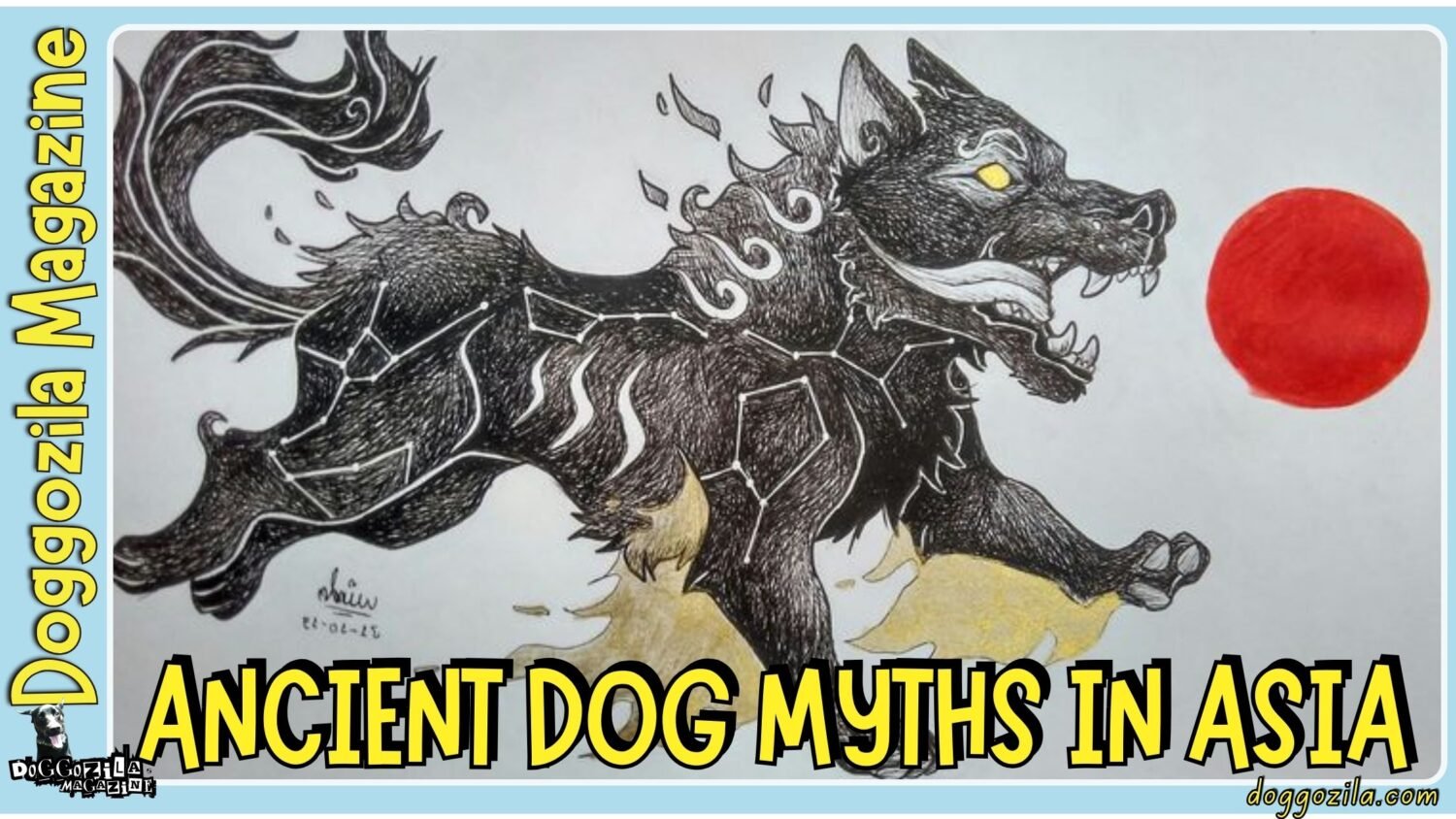Dogs have an uncanny ability to sense human emotions, often gravitating toward individuals who are nervous or fearful around them. This paradoxical behavior, where the very people who want to avoid dogs end up receiving the most attention, leaves many wondering, why do dogs often approach people who are afraid of them? Is it curiosity, instinct, or something deeper?
Not every dog is a fearless explorer, and not every person is eager to meet them, but strangely, the two often find each other. If you’ve ever seen a dog trot toward the one person visibly inching away, you’ve witnessed something oddly beautiful. So, why do dogs often approach people who are afraid of them, almost like drawn to a secret frequency?
Studies in animal cognition suggest it’s a mix of scent, energy, and social responsiveness. Whatever the cause, the behavior is anything but random, and it might just reveal something profound about human–canine relationships.

WHY DO DOGS OFTEN APPROACH PEOPLE WHO ARE AFRAID OF THEM THROUGH CHEMICAL SIGNALS WE CAN’T DETECT?
Dogs live in a chemical symphony. While we navigate the world largely with sight and sound, they rely heavily on scent, which reveals more than where you’ve been, it hints at how you feel. Fear releases specific pheromones, subtle chemical markers carried in sweat and body odor, which dogs are startlingly adept at detecting. From a biological standpoint, why do dogs often approach people who are afraid of them? It’s partly because those pheromones signal vulnerability, and dogs may interpret that as an invitation, or even a cry for help.
In one behavioral study by the University of Naples, dogs showed a higher tendency to engage gently with humans whose stress levels (measured by cortisol) were spiked. This doesn’t mean they’re targeting the nervous, it means they’re curious, concerned, or both. That unique olfactory insight gives them a kind of emotional radar. It’s like being able to smell the mood in a room, literally. So, to the dog, that anxious person may seem like someone who needs a nuzzle. Or at the very least, someone worth checking out.
Why Do Dogs Often Approach People Who Are Afraid of Them Based on Body Language Alone?
Dogs are pros at body language. A stiffened back, widened eyes, or hesitation in movement can signal unease, and dogs don’t need words to pick that up. Why do dogs often approach people who are afraid of them? One reason might be the stillness or lack of assertive movement in fearful people, which dogs read as non-threatening.
Confident dog lovers often reach, kneel, or make direct eye contact, gestures a shy dog might actually find invasive. Conversely, someone inching away or freezing might feel safer to approach. In a playful twist of psychology, the person hoping to avoid attention becomes the most approachable.
Dog trainer Sabrina Mendez has worked with anxious children using therapy dogs, and she notes how canines often pick out the quietest child in the room for initial engagement, instinctively gravitating toward softness. The dance between human energy and canine perception is subtle but unmistakable. Dogs move not just toward motion, but toward emotion they recognize. And in fear, they sometimes sense their own vulnerability mirrored back.
Why Do Dogs Often Approach People Who Are Afraid of Them for Comfort?
Picture this: a storm overhead, thunder cracking, and a child hiding behind the couch. The family’s dog doesn’t hide, but it seeks the child out, curling beside them without a bark. Why do dogs often approach people who are afraid of them, especially in moments of shared anxiety?
Some experts believe it’s not dominance or curiosity, it’s comfort-seeking, too. Dogs, being social pack animals, thrive in emotional synchrony with their human “pack.” They interpret emotional intensity (like fear) as something that either needs calming or joining.
In rescue shelters, it’s not unusual for dogs to engage more with timid visitors, pressing gently into their legs or leaning their heads in. Maybe because fear, unlike aggression, doesn’t threaten, it invites. And dogs, being the emotionally intelligent creatures they are, don’t always run from it. Sometimes they answer it.
🔑 Key Points: Dogs detect fear through scent – Fear releases specific pheromones that dogs can smell, making them curious or concerned about the person emitting them.

WHY DO DOGS OFTEN APPROACH PEOPLE WHO ARE AFRAID OF THEM DESPITE NERVOUS VIBES?
Long before words enter the picture, creatures learn to survive based on the “vibes” they feel from their surroundings. Why do dogs often approach people who are afraid of them when the tension in the room feels thick? It might be because energy doesn’t lie, and for dogs, emotional honesty is like a beacon worth exploring.
Dogs are especially attuned to energy shifts, something most dog owners discover the first time they cry in front of their pup. Energy is everything in the animal world.
Why Do Dogs Often Approach People Who Are Afraid of Them Even When the Fear is Palpable?
It’s one of those opposites-attract mysteries, why would a dog move toward someone clearly uncomfortable? Some animal psychologists believe it’s rooted in the way dogs interpret social cues. When someone displays overt affection, it can actually come across as overbearing or unpredictable.
Meanwhile, a person frozen with fear gives off stillness and non-confrontation, a safer combination in the eyes of a cautious dog. So, why do dogs often approach people who are afraid of them? Because that fear might feel less chaotic than excitement.
In animal-assisted therapy programs, dogs are often shown to approach emotionally restrained patients more frequently than the exuberant ones. It may seem backward, but in the rhythm of a dog’s intuition, fear can equal peace, while excitement might feel like an uncharted storm. The energetic imbalance becomes a tether. A dog feels it, and responds.
Holding Space in Stillness: What Dogs Might Understand That We Don’t?
Stillness holds power. In a world where we’re trained to do, say, and fix, dogs are instinctively good at just being. And when fear enters the equation, a dog doesn’t rush to solve it, they accompany it. Holding space is a deeply emotional concept in psychology, and dogs seem to practice it naturally.
Instead of avoiding fearful energy, they sometimes gravitate toward it in a kind of quiet solidarity. You’ll notice it in moments where a person is sitting in silence, shoulders tense, eyes averted, and the dog just settles beside them. Not barking. Not licking. Just there. We often try to fill silence. Dogs? They honor it.
Why Do Dogs Often Approach People Who Are Afraid of Them When Emotions Are Loud?
People are noisy, emotionally and energetically. And when a person is afraid of dogs, that “loudness” becomes its own kind of signal. But dogs have this clarity to them. A grounded presence. They don’t get tangled in the swirl of nervous internal dialogue like humans do.
So, why do dogs often approach people who are afraid of them in that swirl? Because they recognize it as sincere, and sincerity draws them in. They don’t need full understanding to offer companionship. Sometimes, the most honest thing in the room is the fear itself. And the dog? It walks straight into it, tail wagging low, posture loose, eyes soft. Ready not to fix, but to be present.
🔑 Key Points: Body language speaks louder than words – Fearful people often display stillness or passive movements, which dogs interpret as non-threatening and approachable.
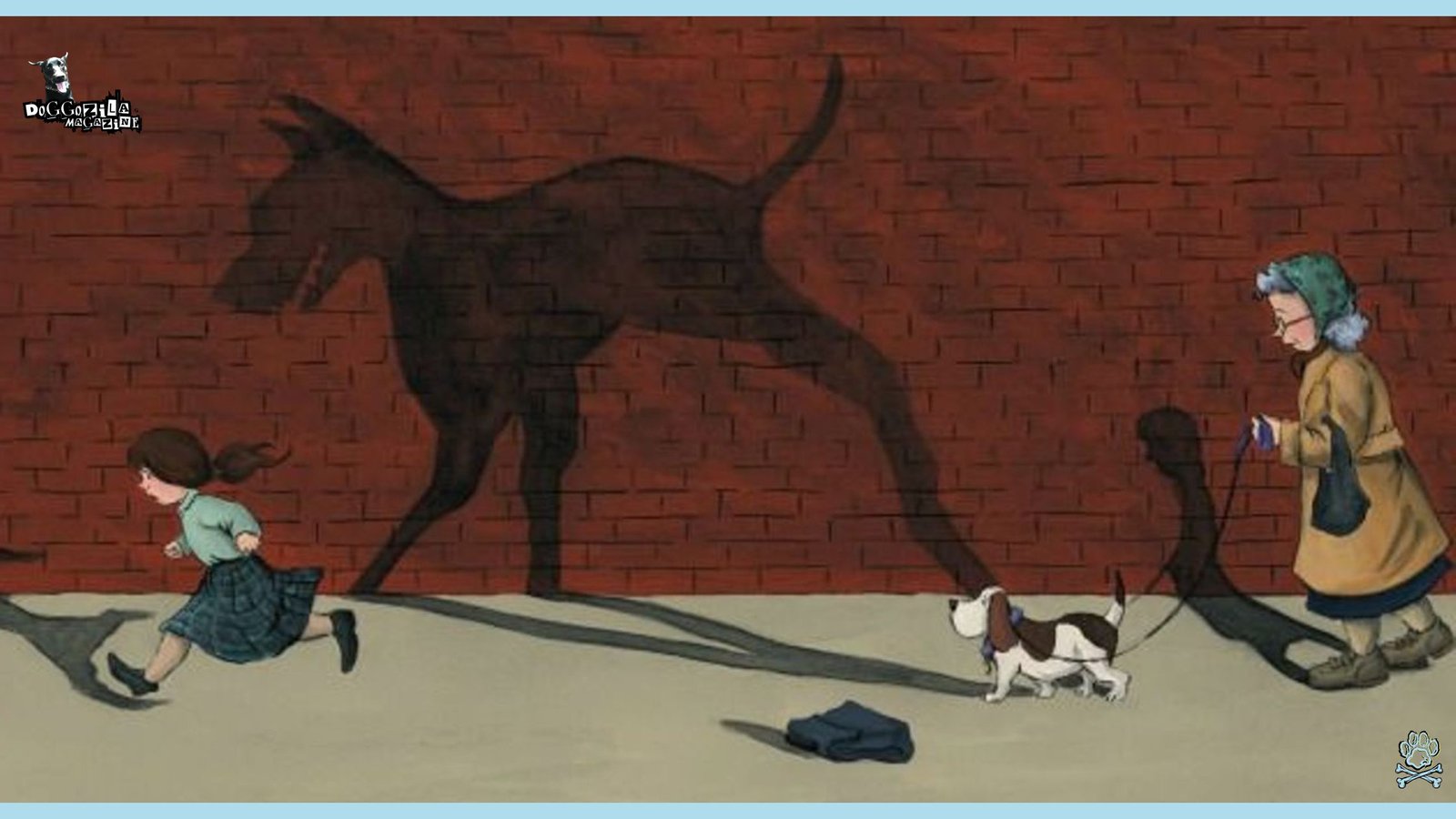
WHY DO DOGS OFTEN APPROACH PEOPLE WHO ARE AFRAID OF THEM IN SHARED MOMENTS OF STILLNESS?
Many of us have wondered why do dogs often approach people who are afraid of them during such moments? Because their instincts seem to understand what humans forget, and vulnerability invites connection. This isn’t about boldness, it’s about quiet understanding, communicated in a glance or a gentle nudge.
There’s something powerful about mutual vulnerability, something dogs seem to recognize without needing an explanation. When a person is afraid, their defenses shift, and they exude a kind of raw openness that dogs don’t see as a threat.
Why Do Dogs Often Approach People Who Are Afraid of Them as a Reflection of Their Own Fear?
Not every dog is brave. Some have lived hard lives, rescues, strays, survivors and they carry emotional echoes of fear too. So when a dog senses a human’s apprehension, it might not just be curiosity, it might be kinship. Why do dogs often approach people who are afraid of them, especially when the energy feels fragile?
Sometimes it’s because they see themselves in those timid eyes. Trainers at trauma recovery centers have reported countless cases of dogs forging the first connection with a nervous visitor, not because they’re fearless, but because they’re familiar with fear.
Dogs may mirror emotional states more than we realize, responding to internal cues with almost surreal accuracy. That moment when a dog tiptoes over, head lowered, tail at half-mast? It’s empathy in motion. They aren’t confronting fear, they’re acknowledging it. When a dog and person both carry unspoken scars, something beautiful happens, silent healing through presence.
The Unspoken Pact: Shared Vulnerability Builds Instant Trust
It’s wild how trust can bloom from silence. A frightened person, sitting quietly on a park bench. A dog, watching from a distance. They don’t speak the same language, but something clicks. That’s the magic of shared vulnerability.
Neither party feels in control. Both are uncertain. And in that liminal space, something tender opens up.
Maybe it’s the lack of pressure. Maybe it’s the purity of the moment. But trust doesn’t always need words, it just needs to feel safe. And dogs, unlike people, never ask why you’re scared. They just accept it and sit beside you anyway.
Why Do Dogs Often Approach People Who Are Afraid Of Them When Connection Is Most Needed?
Every once in a while, you’ll hear a story that sounds made-up. A woman panicking quietly on a subway bench. A stray dog limping over to lay at her feet. No barking. No noise. Just presence. Why do dogs often approach people who are afraid of them during such emotionally raw moments? Because instinct tells them something is missing and they can fill that space.
It’s not about protection or dominance. It’s about presence. Stories like these aren’t just anecdotes, they’re patterns. Repeated. Observed. Documented. And every time it happens, we’re reminded that dogs don’t just sense our fear. They answer it with stillness, proximity, and strangely perfect timing.
🔑 Key Points: Dogs seek to comfort, not dominate – In moments of shared anxiety, dogs may approach to offer companionship rather than assert control.

WHEN DOES FEAR LOOKS LIKE AN INVITATION INSTEAD OF A WARNING?
To people, fear means “stay away.” But to dogs? Not always. In fact, what we interpret as “get back” signals might feel like an unspoken come closer to our four-legged companions. That’s because dogs see the world differently, no internal dialogue, no ego, just an energy map and curiosity. Why do dogs often approach people who are afraid of them when everything seems to say “don’t”? It’s a mystery of biology, body language, and perhaps a little bit of magic.
Dogs often rely on a rich repertoire of signals that help them interpret human behavior. Their tail wagging, ear positioning, and soft vocalizations all serve as communication tools. In moments of tension, these signals become especially crucial to convey reassurance.
Why Do Dogs Often Approach People Who Are Afraid of Them Despite Human Signals to Stop?
When a person is scared, their body language says stop, but not in the way dogs understand. Hands pulled back. Eyes looking away. Shoulders tense. These don’t scream “danger” to a dog, they whisper “I won’t hurt you.” Why do dogs often approach people who are afraid of them when those people are practically frozen in place? Because that freeze looks non-threatening.
In the dog world, approachability is often read by how passive someone appears. Animal behavior studies at UC Davis showed dogs consistently preferring to investigate humans who remained still over those who moved or made noise. The very stillness that fear creates may ironically become an open door to approach. It’s unintentional but it works.
Body Language Lost in Translation: How Dogs Read Us Without Understanding Context?
Ever seen someone nervously fidget when a dog walks by, only to watch that dog plop down right next to them? That’s body language gone sideways. Humans and dogs read gestures through different lenses, and what we mean isn’t always what they perceive. A small flinch might look like play. A turned shoulder might seem like softness.
It’s easy to forget that dogs aren’t interpreting gestures as people do, they decode them through patterns and repetition. And most dogs, through years of human interaction, have developed a sixth sense for who might offer quiet company, even if they don’t look like they want it.
Which brings us to one of the greatest quirks of inter-species communication: it’s often intuitive, not intellectual.
The Curious Case Of Dogs Choosing The Uncomfortable Human
In a room full of dog lovers and one fearful guest, who does the dog beeline for? You already know. Why? It could be the scent. The silence. The energy. But more than that, dogs seem to notice what doesn’t belong, and they’re drawn to it. That fear becomes a kind of anomaly, something worth investigating.
In shelters, vets often note that shy dogs gravitate toward equally shy humans, almost as if calibrated on the same frequency. There’s a quiet comfort in discomfort, a shared sense of “we’re not sure, but we’re trying.” And dogs? They’re exceptional at recognizing that effort.
🔑 Key Points: Energy attracts dogs more than overt signals – Fearful energy is honest and intriguing to dogs, making them more likely to engage despite nervousness.
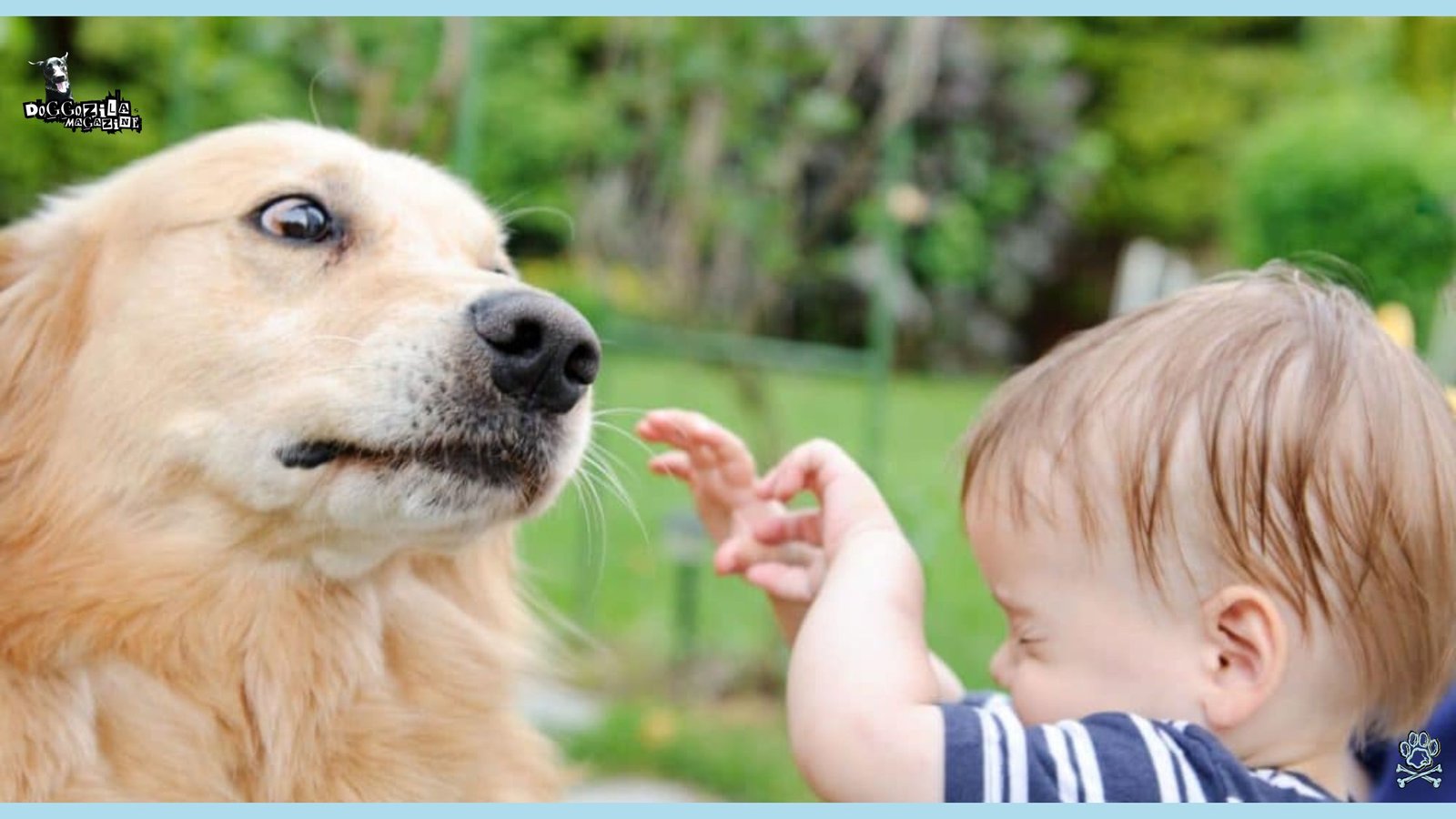
WHY DO DOGS OFTEN APPROACH PEOPLE WHO ARE AFRAID OF THEM WITHOUT VERBAL CUES?
Dogs don’t need to hear our voice tremble to know something’s wrong—they feel it, read it, even smell it. Their world isn’t filtered through language, it’s shaped by emotion, body energy, and instinct. That is why dogs often approach people who are afraid of them when no one says a word? Because dogs are masters of silent observation, and in silence, they learn everything. What we don’t say, they notice the most and it’s often that unsaid fear that draws them in.
Emotional complexity in dogs is evident through their spontaneous displays of affection and empathy. Their actions are not driven by mere curiosity but are a reflection of deep emotional intelligence. In controlled experiments, dogs have been observed adjusting their demeanor based on the emotional state of those around them.
Why Do Dogs Often Approach People Who Are Afraid of Them Without Needing to Hear It?
Humans often imagine that communication happens in words, but to a dog, the most honest signals are silent. Why do dogs often approach people who are afraid of them? Because nervous people emit cues, rapid breathing, tense shoulders, gaze aversion, all of which dogs notice instantly.
These signals are their bread and butter. Unlike people, they don’t get distracted by what you’re saying, they tune into what you’re feeling. Trainers often note that a dog will ignore someone talking cheerfully but gravitate toward a quiet, shaky individual instead.
It’s not about volume, but it’s about vibration. That’s not mystical, it’s neurological. Dogs are wired to detect stress markers; their bodies respond before their minds do. So, that hush in the room when someone is scared? Dogs don’t just hear it. They feel it. And often, they answer.
The Emotional Feedback Loop: How Dogs Respond In Sympathetic Sync?
Ever noticed how a dog mirrors your mood? That’s emotional entrainment. The moment you exhale in fear, they soften their gait. When your shoulders drop, so does their tail. It’s a feedback loop in action, a real-time dance of empathy. This is why, when someone is scared, dogs don’t act dominant, they act calm.
They slow down, make smaller movements, and offer their presence like a gentle balm. And this reaction often happens before they even make contact. It’s the vibe that greets them, and they respond in kind. Behaviorists compare it to a form of emotional mirroring, a subtle mimicry that builds trust fast. It’s not a trick. It’s instinct.
Why Do Dogs Often Approach People Who Are Afraid of Them as If They’re Meant to Help?
It almost feels intentional. That stray in the alley who walks toward the kid crying by the dumpster. The foster pup who sits beside the anxious teen on her first day of group therapy. Why do dogs often approach people who are afraid of them with such precision, like they’ve been sent?
While there’s no scientific proof of purpose, stories like these echo everywhere. Animal-assisted intervention programs thrive on this exact phenomenon. It’s not trained, it just happens. These moments hint at something bigger, maybe not magic, but certainly emotional synchronicity. And in that space, healing starts with paws padding across the floor.
🔑 Key Points: Stillness invites connection – Unlike humans, dogs don’t avoid fear; they often move toward it, offering quiet solidarity.
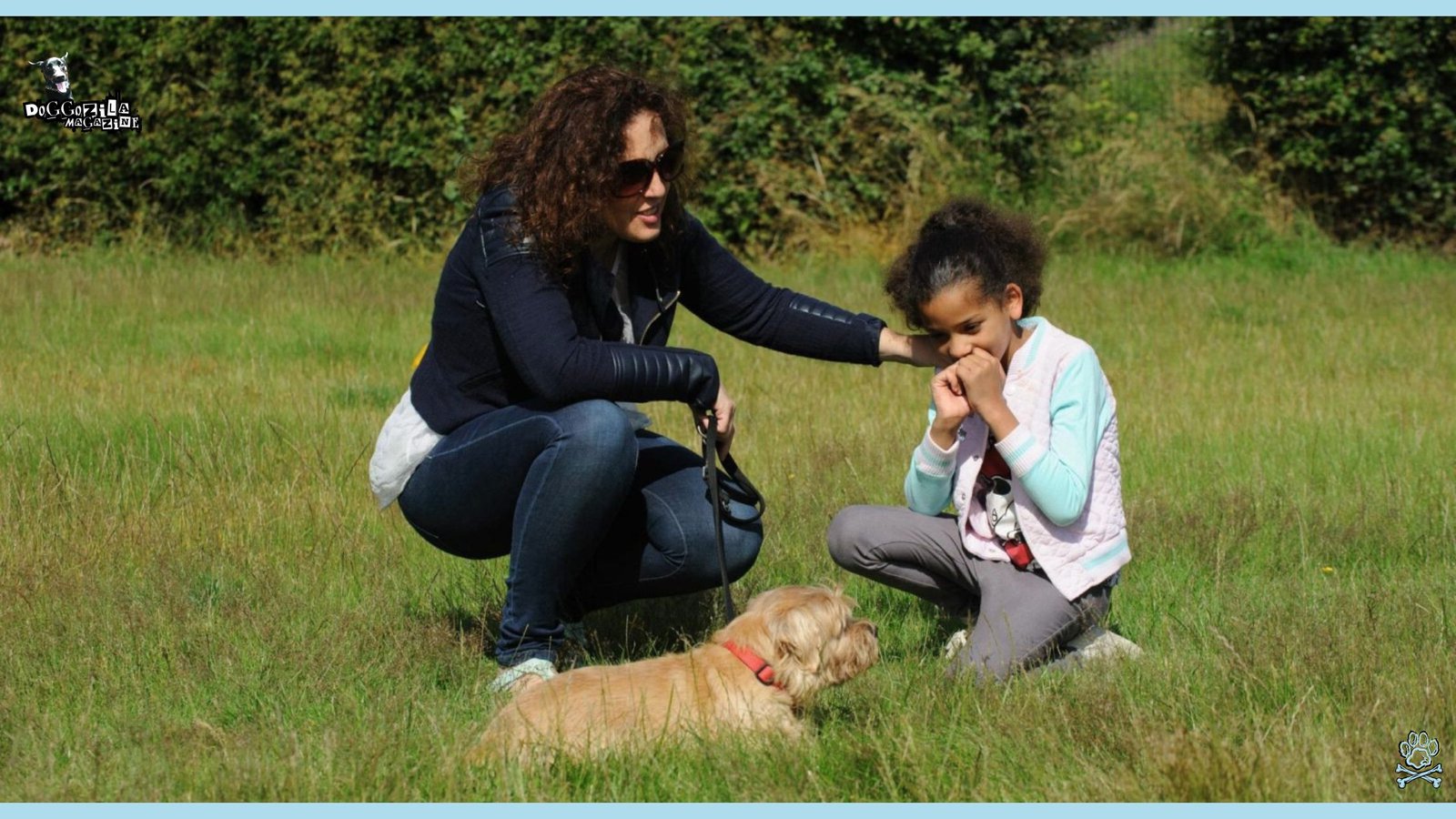
THE SOCIAL INTELLIGENCE BEHIND WHY DOGS OFTEN APPROACH PEOPLE WHO ARE AFRAID OF THEM
Dogs aren’t just running on autopilot, they learn, adapt, and develop complex social understanding. Over thousands of years, they’ve become attuned to human behavior in ways that surprise even scientists. So why do dogs often approach people who are afraid of them while ignoring others? Because their social intelligence picks up on subtleties we aren’t even aware of. It’s part instinct, part lived experience, and entirely remarkable.
Social learning greatly influences how dogs interact with humans and other animals. Dogs raised in diverse social settings often exhibit less apprehension around nervous individuals. The interplay between learned behavior and intrinsic tendencies forms the backbone of dog’s social skills.
Life Lessons from Humans: How Past Interactions Shape a Dog’s Response?
Dogs are walking memory banks. A head tilt during an argument. The jingle of keys before a vet trip. A lowered voice after someone cries. Each moment becomes data. Dogs learn patterns, connect them to outcomes, and store that knowledge for future reference.
So when they see someone afraid, they remember other times someone looked like that, and what happened next. Why do dogs often approach people who are afraid of them without hesitating? Because past interactions taught them that fear isn’t danger, but it’s an invitation for comfort.
Experienced therapy dogs refine these instincts through hundreds of encounters, while even family pets hone them through daily life. With every new face, they learn a little more. And with every gentle approach that ends in a pat or a smile, they reinforce the value of their response.
Emotional Fluency: How Dogs Score Higher Than We Think?
Social intelligence isn’t just about performing tricks or responding to commands, but it’s about reading the room. In blind studies, dogs consistently detect emotional shifts in people even when no cues are visible. They pick up on micro-expressions, heart rate changes, and tone shifts with stunning accuracy.
That’s emotional fluency. Why do dogs often approach people who are afraid of them in social environments where others back away? Because they know. Maybe not the full psychology, but enough to act appropriately.
That’s not just instinct, but it’s wisdom born from repetition, connection, and years of unspoken interaction. Some scientists even argue that dogs surpass primates in interpreting human emotions. When you think about it, that’s not just amazing. That’s revolutionary.
Why Do Dogs Often Approach People Who Are Afraid of Them Using Skills Learned Over Time?
No dog wakes up perfectly empathetic. Just like people, they grow through experience. Why do dogs often approach people who are afraid of them more accurately as they age? Because they’ve had time to observe. To test their approach. To gauge results. This isn’t magic, but it’s trial and beautiful error.
Dogs remember how people reacted to past attempts, and they refine their body language accordingly. A nervous laugh? Back off. A slow blink? Step forward. Over time, they build a toolkit of responses that deepen their capacity to comfort. And that’s not just social smarts, but it’s compassion in action.
🔑 Key Points: Dogs mirror emotions instinctively – They respond to fear with calmness, slowing their movements to create a sense of safety.

WHY DO DOGS OFTEN APPROACH PEOPLE WHO ARE AFRAID OF THEM DURING EMOTIONAL HIGHS?
Emotion is loud, even in silence. Dogs don’t need a raised voice or a dramatic gesture to recognize it. Why do dogs often approach people who are afraid of them in those intense, still moments? Because big feelings call to them like sirens across a quiet sea. They sense the build-up, feel the shift in breathing or posture, and move toward it, not away.
Dogs, especially those who are less confident themselves, are incredibly adept at reading emotional states. They can sense your heightened anxiety, but instead of interpreting it as a threat to them, they might perceive it as a sign that you have detected something threatening in the environment.
Why Do Dogs Often Approach People Who Are Afraid of Them During Emotional Peaks and Crisis Points?
Picture this: a teen crying in the bathroom, door cracked open. A dog inches in and lies across her feet. No instructions. No cues. Just presence. Why do dogs often approach people who are afraid of them at emotional peaks? Because they interpret high-energy emotion not as chaos, but as connection.
Veteran therapy dogs in hospitals often sit with terminal patients during their most emotionally charged moments, even before any touch is exchanged.
Studies out of the Karolinska Institute have shown that dogs can differentiate between anxious and neutral human tears through smell alone. These dogs don’t flinch at emotion, they respond with warmth. And during a storm of feeling, that quiet response becomes an anchor. That’s the genius of dog timing, it’s emotionally impeccable.
The Comfort Mechanism: Dogs As Emotional Interrupters
Dogs might not “fix” anything in the traditional sense, but boy do they know how to intervene. That paw on the knee, or how dogs lean against a leg. That sigh as they rest their head on someone’s lap at just the right time. These aren’t accidents. They’re gentle emotional brakes, interruptions of spiraling thoughts.
A Harvard study once referred to dogs as “emotional co-regulators,” reducing cortisol and even boosting serotonin. This isn’t magic, it’s biology, paired with uncanny social timing. Why do dogs often approach people who are afraid of them when emotional overwhelm sets in? Because they’ve learned that proximity soothes, and they apply that knowledge effortlessly.
Why Do Dogs Often Approach People Who Are Afraid of Them Amid Tension?
You’ve felt it, that moment when the air in a room changes. When someone is anxious, even silently so, the mood becomes heavy. Dogs feel that too. Why do dogs often approach people who are afraid of them during those tension-charged moments? Because they’re specialists in easing energy.
Trainers describe it as “reading the room on four legs.” They adjust their gait. Slow their breathing. Engage in soft, repetitive movements. Sometimes they break the energy with something as small as a sneeze or a quick downward dog stretch. It’s not just about being present, it’s about neutralizing. You can’t teach that. It’s something they just… do.
🔑 Key Points: Past experiences shape a dog’s response – Dogs learn from repeated interactions, refining their ability to comfort fearful individuals over time.

WHAT DOGS TEACH US ABOUT FEAR, TRUST, AND THE POWER OF PRESENCE?
From ancient hunting partners to therapy companions in ICU units, dogs have followed us across millennia, not just as pets, but as emotional guardians. Why do dogs often approach people who are afraid of them, again and again, across cultures and generations? Because the bond we share is written in behavior, not biology alone. And maybe, in all our anxious, word-filled fumbling, dogs are the ones who have it right.
Dogs act as emotional stabilizers. During high-stress moments, they naturally intervene, reducing tension through their presence.
The Sacred Loop Of Giving And Receiving
When a dog approaches someone in fear, they aren’t doing it for applause. They’re responding to a need. But in doing so, they receive something too, such as trust, connection, a sense of purpose. It’s a sacred loop, the more dogs comfort us, the closer we draw them into our emotional world.
This reciprocity has turned dogs into symbols of healing in myth, medicine, and literature. And every time it happens, the loop strengthens. Why do dogs often approach people who are afraid of them? Because that moment of approach isn’t just helpful, it’s meaningful, for both sides.
The Legacy Continues: How We Can Learn from Dog’s Courage
In a world where fear often isolates, dogs lean in. That’s not just brave, it’s revolutionary. And maybe it’s something we can learn from. When someone’s anxious, don’t step back. Step in. With softness and with presence. With the kind of gentle, expect-nothing energy a dog naturally offers. That’s not just compassion, it’s transformation in its purest form.
Why Do Dogs Often Approach People Who Are Afraid of Them and What That Says About Us?
It is said that empathy doesn’t have to be explained or that quiet recognition is just as powerful as bold affection. It is said that connection can bloom in the most unexpected of moments, when one heart is pounding and the other stays steady.
So, lets ask for the last time today, why do dogs often approach people who are afraid of them? Because they’ve read us better than we read ourselves. Because fear is not a wall to them, it’s a doorway. And when they walk through it, tails low and eyes soft, we’re reminded what true presence looks like.
Final Thoughts!
While the article has journeyed through the intricate layers of why dogs often approach people who are afraid of them, the overall message invites us to reflect on the profound empathy embedded in dog behaviors. Every anecdote, scientific observation, and historical insight serves as a reminder that our furry friends possess a remarkable ability to intuit and respond to human emotions.
These interactions are not accidental but rather the culmination of millennia of evolution, social learning, and subtle non-verbal dialogue. In essence, understanding these behaviors enriches our lives by reminding us that true companionship thrives on mutual care and trust.
Ultimately, the journey through scientific analysis, historical context, and personal narratives inspires us to embrace the mystery and beauty of every interaction with our beloved dogs. The mystery of why do dogs often approach people who are afraid of them boils down to biology, instinct, and miscommunication.
By learning how dogs perceive fear, we can change our reactions and create more positive interactions.
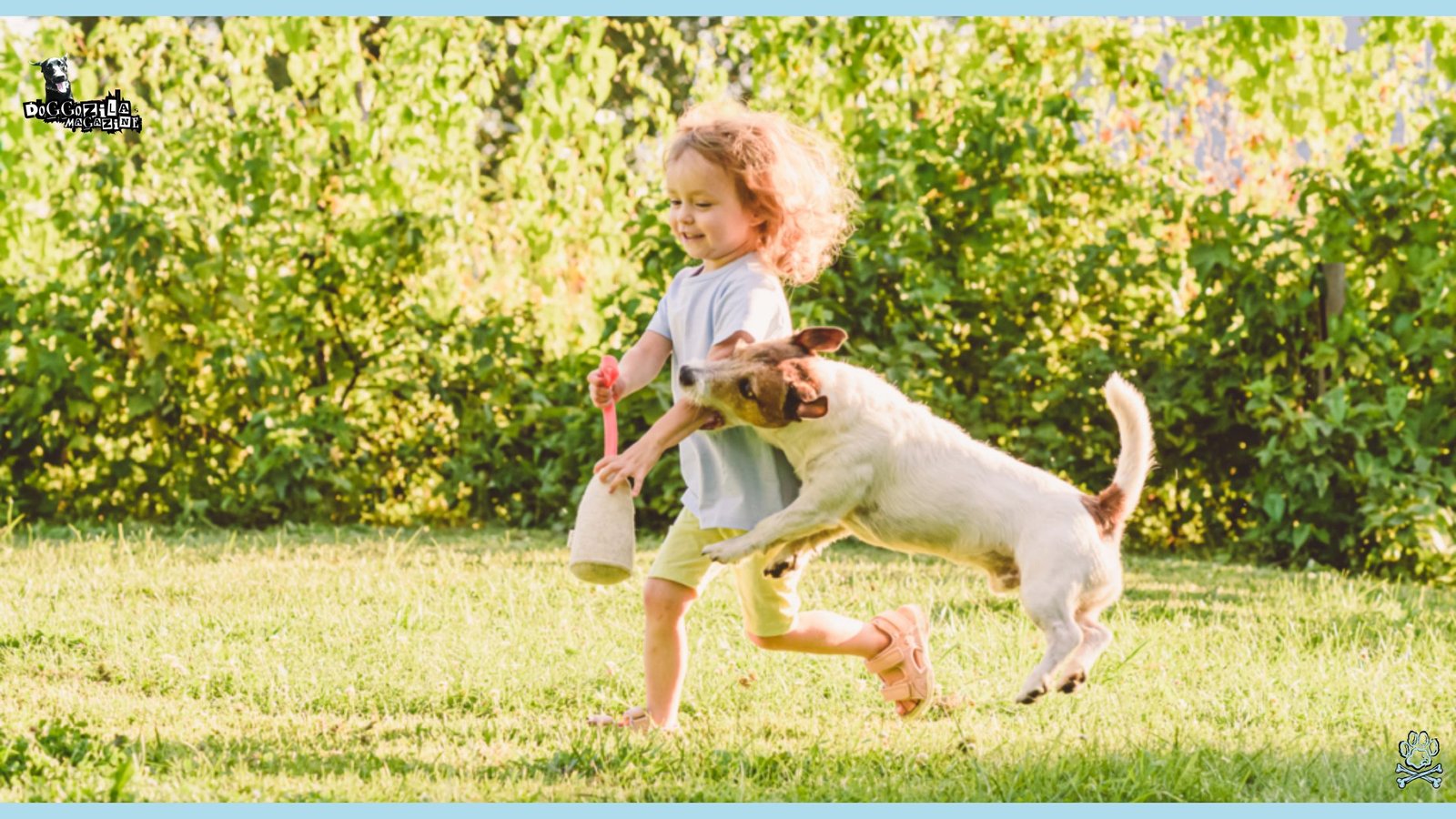
Whether you’re a dog lover or someone who dreads encounters with them, knowledge is power, and it might just make your next walk a little less stressful.








